Above: Baggy Point, Moor Lane, Croyde, Braunton, UK.
Journey through the Three Kingdoms, pt. I: Ireland
Journey through the Three Kingdoms, pt. II: England
If Ireland is the spiritual home of many of the Catholics and Orangemen scattered around the Anglosphere, the next Kingdom, England, is surely still the centre of everything and one else. Open the popular imagination, and what comes tumbling out? A cavalcade of King Arthur, Robin Hood, Chaucer, Shakespeare, Dickens, Mummer’s Plays, Morris Dances, Jack in the Green, Foxhunting, Harvest Festivals, Lessons and Carols, Boar’s Head feasts dance in the head. As Orson Welles put it,
…I think there has always been an England, an older England, which was sweeter, purer, where the hay smelled better and the weather was always springtime and the daffodils blew in the gentle, warm breezes. You feel a nostalgia for it in Chaucer, and you feel it all through Shakespeare.
There are certainly two Englands – the one that Orson Welles described, and that Charles Williams and C.S. Lewis dubbed Logres, and the other, which they called Britain, and William Blake Albion. The former is the one that haunts the imagination, and is filled with Knights and Cavaliers, Saints and shrines. The other is the land of Henry VIII and Cromwell, of Puritanism and “dark satanic mills.” We sought the first.
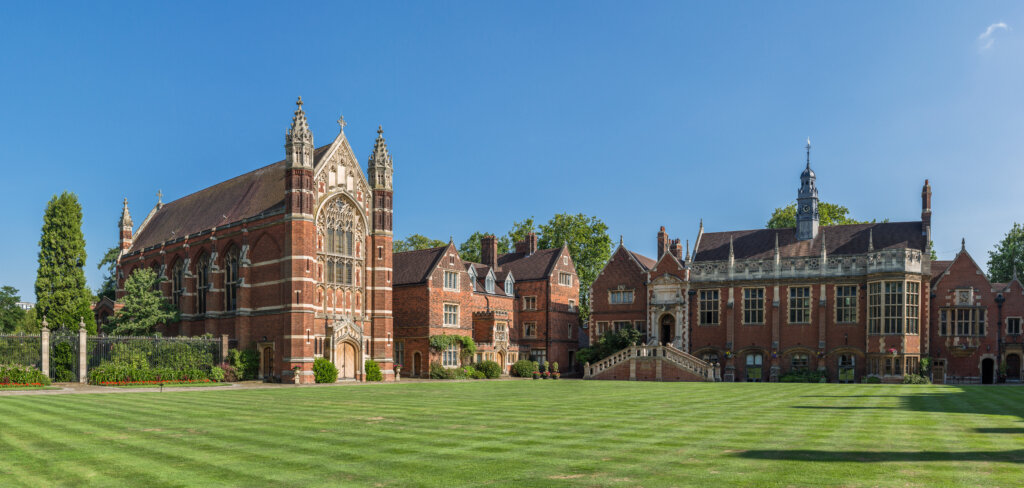
We landed at Stansted on Palm Sunday, and quickly arrived at our lodgings in Cambridge. As the younger rival to Oxford, Cambridge University must suffer in comparison as it tended to be a stronghold of Puritanism and Whiggery, as opposed to its competitor’s Recusancy, Royalism, and Jacobitism – to say nothing of the Oxford Movement and the Inklings. It has been said that the history of the Anglosphere would be quite different if the Encyclopaedia Britannica had come out of Oxford rather than Cambridge; but there is more to the story than that. As it happens, my Godson is a doctoral candidate in history at Trinity College. Although – especially since the founding of the Ordinariates – we mostly think of the Oxford Movement in the history of the Catholic Revival, Trinity College produced a number of Catholic converts in the 1820s – Kenelm Digby, Ambrose Philipps de Lisle, and George Spencer. Known in their time as the “Cambridge Converts,” the last named became a Passionist, and as Ven. Ignatius Spencer, is a candidate for Beatification.
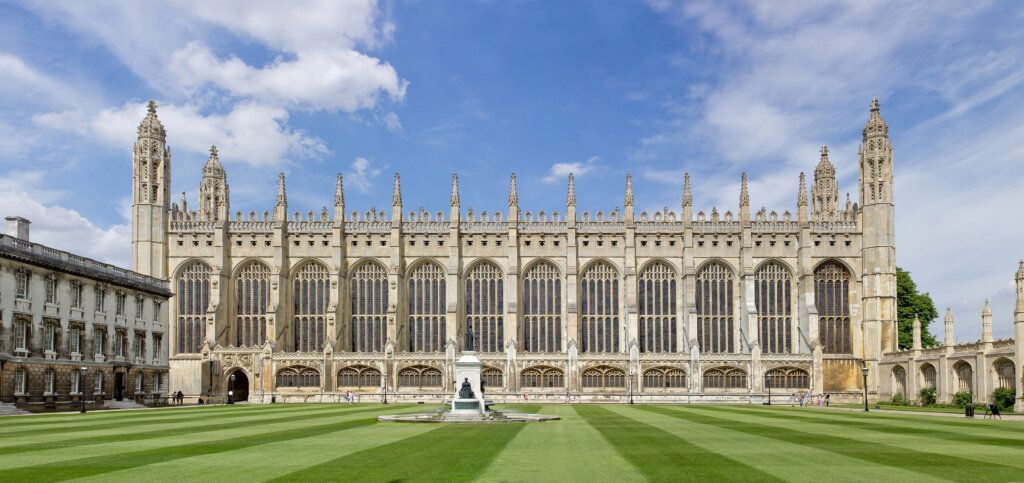
But Cambridge reminds one of another, and far longer lasting cause for Sainthood – that of Servant of God King Henry VI. Founder of both elite public school Eton College and Cambridge’s King’s College (the chapel of which annually hosts the world-famous Advent Service of Lessons and Carols), Lancastrian Henry was not a very successful Monarch – being a chief loser in the Wars of the Roses. But his sanctity was renowned; even his opponent, Yorkist Richard III thought so, reburying his remains at St. George’s Chapel, Windsor. His cause was introduced at Rome in the time of Henry VII; had it not been for that King’s son’ apostasy, he might well be on the altars now. Nevertheless, the cause has not been concluded, and the material gathered in its favour, The Miracles of King Henry VI remains. First published in 1500, it contains 174 miracle stories; 300 more are on record. Translated by Msgr. Ronald Knox and Sir Shane Leslie (both of whom strongly favoured the cause), the new version gave rise in the 1960s to the Henry VI Society, which actively sought the King’s beatification, and even produced with ecclesiastical approval a prayer book (a copy of which this writer owns). The Society is dormant now, but devotees continue to pray at the King’s tomb, and leave yellow roses (in token of the golden rose the Pope once sent Henry).
Cambridge is a beautiful town, and worth exploring. The Pickerel is a favoured pub of this writer – as it was of Lewis and Tolkien during their stays in Cambridge. But also try the Baron of Beef and the Mitre. Nearby are the Medieval Round Church, built in tribute to the Holy Sepulchre, and the Anglo-Catholic Church of St. Clement’s. For Catholics, Fisher House is the University Chaplaincy; Blackfriars – long time residence of my favourite living theologian, Aidan Nicholas, O.P. – is the Dominican House for the University; the parish church is the glorious 19th century Our Lady of The Assumption and The English Martyrs, which features a 6:30 PM Latin Mass on Sundays.
One area of literature where English writers have excelled is children’s literature: Lewis Carroll, J.M. Barrie, E. Nesbit, Arthur Ransome, Katherine Briggs, A.A. Milne, John Masefield, and of course C. S. Lewis are but a few of the names that come to mind. But among my very favourites as a child were the Green Knowe books of Lucy Maria Boston. Set in a mysterious old manor house in the fen country near Cambridge, they were a great delight to me. As it happens, however, Mrs. Boston based her books upon her own home – The Manor at Hemingford Grey. Her daughter-in-law, Diana Boston, now presides over the place; since everything in the books has a real-world equivalent, visiting there was literally like entering the pages of the book.
Time did not allow stopping at either Ely, with its beautiful abbey church-turned-cathedral and neighbouring Catholic Church with relic of foundress St. Edith, nor at Peterborough and the tomb of Catherine of Aragon, for whose cause of beatification a number of people are calling. Instead, we pressed on to Walsingham, and the great shrine of Our Lady. The mournful ruins of the original Medieval Shrine – inspired by a vision of the Blessed Virgin, and destroyed by Henry VIII, as commemorated in the “Lament for Walsingham” are now open to the public. The Anglican shrine in the centre of town, built in the early 20th century by the Anglo-Papalist Fr. Alfred Hope Patten, is a mile from the Catholic one – the “Slipper Chapel,” so-called because during the Middle Ages pilgrims would take off their shoes and walk the last mile barefoot. The three sites dominate the village and are powerful reminders of the days when England was called “Our Lady’s Dowry.” One feels strongly there as though one were in an alternate world, where the Protestant revolt had never happened.
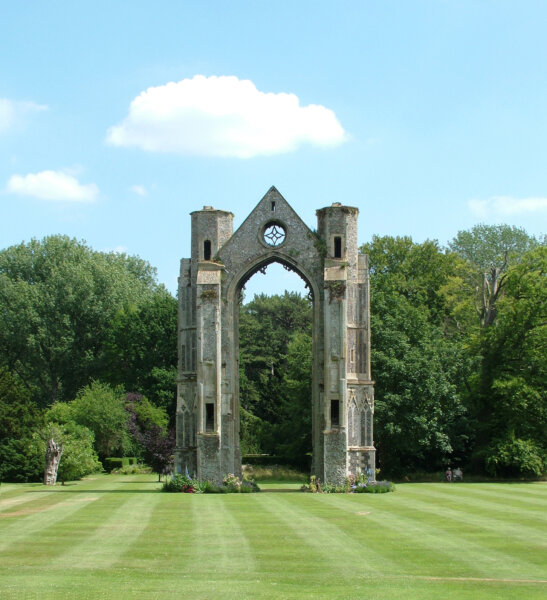
It is was in this mood that we went to down to London on Spy Wednesday. To our delight, two regular parishes were offering the pre-1955 Rites of Holy Week. Although, to be sure, one does miss the footwashing on Maundy Thursday, in England there is a visible reminder that Our Lord’s washing of His disciples’ feet at the Last Supper was seen as merging of His Davidic Kingship with the Communio of the Church. Thus, in Catholic days, Monarchs washed the feet of the poor from Portugal to Poland as a sign of their participation in Christ’s Kingship of service. Usually the poor so treated were given a banquet and money. To this day the British King presides over the “Royal Maundy Service” – although the footwashing itself is gone, the banquet and the distribution of alms remains.
At any rate, before going to the Good Friday service, we saw to our amazement an excellent Passion Play in Trafalgar Square. It was put on by the Wintershall Players, a company located at the estate of the same name, owned by Catholic author-director Peter Hutley. A retired businessman and local politician, Hutley and his wife have devoted themselves to Christian theatre. It was a grueling performance, as Passion Plays should be – and completely true to the Gospel accounts. To see it in the ceremonial heart of Britain, the Commonwealth, and in a sense, the entire Anglosphere was a reminder of the Kinship of Christ over the entire world – especially fitting on that day. Poignantly, nearby stands the equestrian statue of King Charles I, murdered by Parliament in 1649 for his refusal to accept abolition of bishops in the Church of England, his negotiations with Rome for reunion, and his defence of the peasant whom the oligarchs supporting his enemies were driving off the land. Not far away is the Banqueting House, in front of which the “White King” was beheaded.
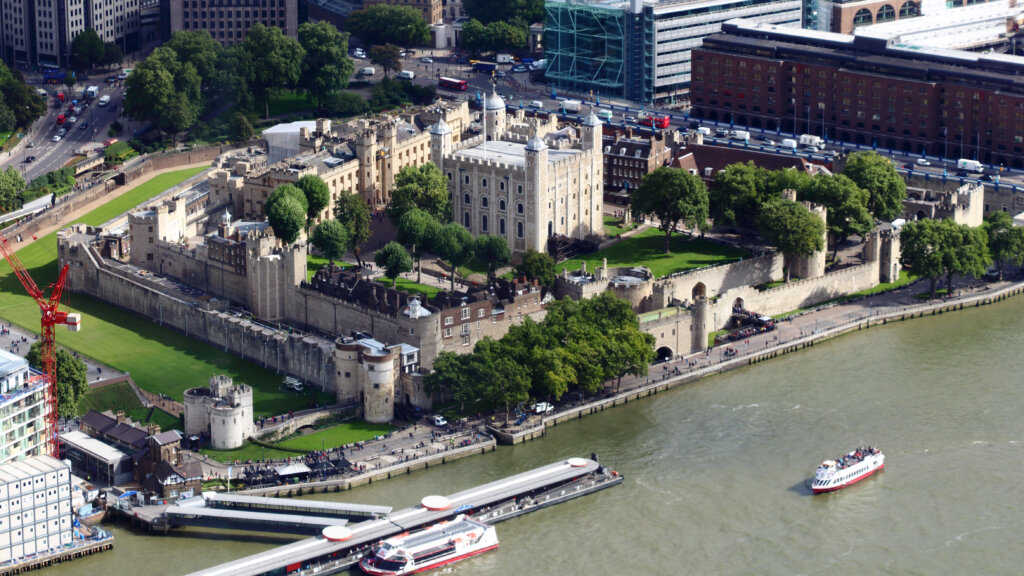
There is so much for the Catholic to see in London; books can and have been written about it. Westminster Cathedral, of course, and Brompton Oratory, to be sure. As a member of the Ordinariate and the Royal Stuart Society, this writer always tries to fit in at least one Mass at the Church of the Assumption and St. Gregory on Warwick Street – principal church of the former body, and sacred to the latter because of its Jacobite connexions. There is Tyburn Convent, with its collections of martyrs’ relics, so close to the hill where so many died for Christ. But there is also Westminster Abbey (ask to venerate the Shrine of St. Edward the Confessor, one of two to survive the Protestant revolt intact) with its tombs of Mary I and Mary Queen of Scots (the latter also a Servant of God), and the Coronation Chair in which so many Catholic Monarchs have been crowned and anointed – and last used by Charles III this year. The Tower of London has much to show as well, but the bodies of Ss. John Fisher and Thomas More are entombed there in the Chapel Royal of St. Peter ad Vincula – fitting, given the Papal Supremacy for which they died.
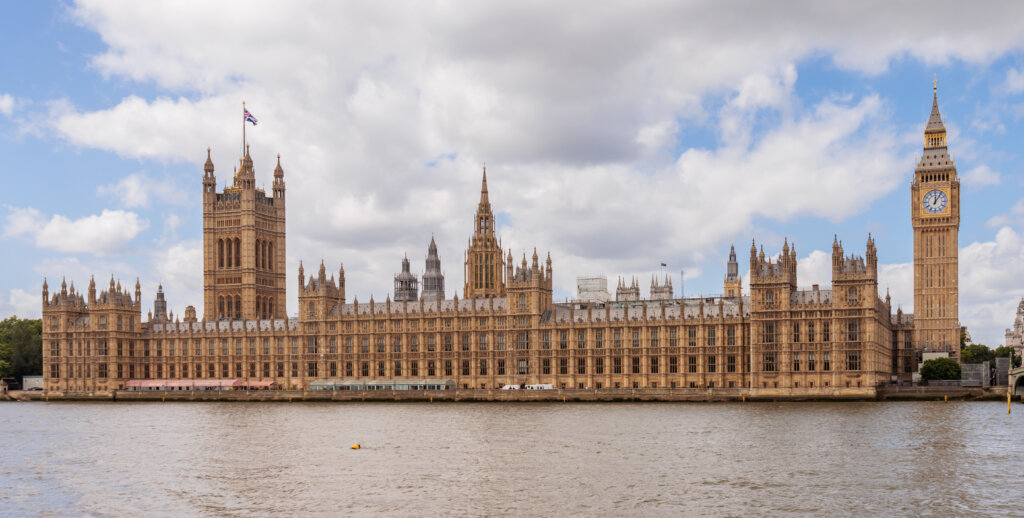
Easter Monday morning, we were given a tour of the Houses of Parliament, co-designed after the 1834 fire by Catholic convert Augustus Pugin. Splendid as they are, however (and I could not help but compare the House of Lords to the much simpler one in Dublin), Westminster Hall, the only part of the Medieval palace to survive the fire, really moves the heart – thinking of the many saints and heroes who trod its floors. Most impressive was the chapel of St. Mary’s Undercroft, which after many centuries again hosts a weekly Catholic Mass. We then had lunch at Ye Olde Cheshire Cheese on Fleet Street, where, ever since Doctor Johnson and his friends began celebrating in the 18th century, various renowned literary circles have met. After viewing the good doctor’s nearby house, it was time to leave for Oxford.
The “City of dreaming spires,” “home of lost causes,” Oxford in many ways epitomises Logres. The University sheltered Roger Bacon, numerous Recusants, Cavaliers (King Charles I kept court during the Civil Wars at Christchurch College), Jacobites, and of course was the birthplace of Anglo-Catholicism in the “Oxford Movement.” Most famously, of course, in the last century were the Inklings – Tolkien, Lewis, and Williams. All have left their mark on this lovely city – in its churches, colleges (especially the chapels thereof), and pubs. The soul of Catholic Oxford is surely the Oratory, with its Relics Chapel; but the Dominican house, Blackfriars, where Tolkien served a requiem Mass for Williams, has furnishings by Eric Gill. The now-shuttered-but-supposed-to-reopen Eagle and Child and the Lamb and Flag are the two pubs most associated with the literary trio. Oxford’s Ordinariate group, which they surely would have approved of, meets at Holy Rood. Indeed, searchers after the “Other” England could spend as much time here as in London.
We could not, however, but had to leave for the Midlands. There is much to see there as well. Birmingham boasts its Catholic cathedral, also designed by Pugin; the Birmingham Oratory, with its Newman shrine and Tolkien memories; and Aston Hall, prototype of Washington Irving’s Christmas stories of “Bracebridge Hall,” which fired the imagination of a young Charles Dickens, and led directly to the rebirth of the feast throughout the Anglosphere. Leicester has its memories of the recently re-interred Richard III, whose admirers around the world man the Society named after him. Derby boasts Jacobite monuments and exhibits, as the furthest southern spot reached by Bonnie Prince Charlie in 1745. The seeker after Robin Hood must visit Nottingham for its Castle, and the oldest pub in the Country, the Old Trip to Jerusalem; thence into the wilds of Sherwood Forest, its ancient “Major Oak,” where his merry men disported, and Edwinstowe, at whose church the robber and upholder of King Richard’s rights married Maid Marian.
There was only one northern spot on our itinerary – York. There is the Minster, Medieval Catholic centre; the Catholic Church of St. Wilfrid, home of the nascent York Oratory, with its relics of its name saint; the ruins of St. Mary’s Abbey; and the Shrine of St. Mary Clitheroe. Time, alas did not permit any longer lingering in England, although on previous trips this writer has seen the shrines at Ladyewell, Durham, Jarrow, and Lindisfarne. We needed to board the train for the Bonny Kingdom of Scotland, which shall be the subject of the next article. One thing was certain; Logres is far from dead. It lives on not only in shrines and museums and folk customs, but most especially in the Latin Mass Communities, Oratories, and the Ordinariate, where all that was best in Anglo-Catholicism has found a home in the Church.
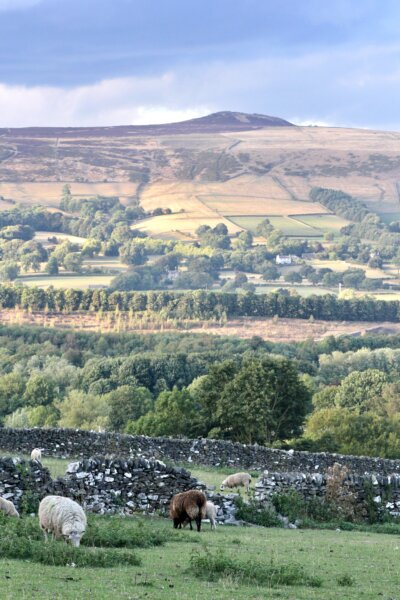
Photo credit Unsplash.


